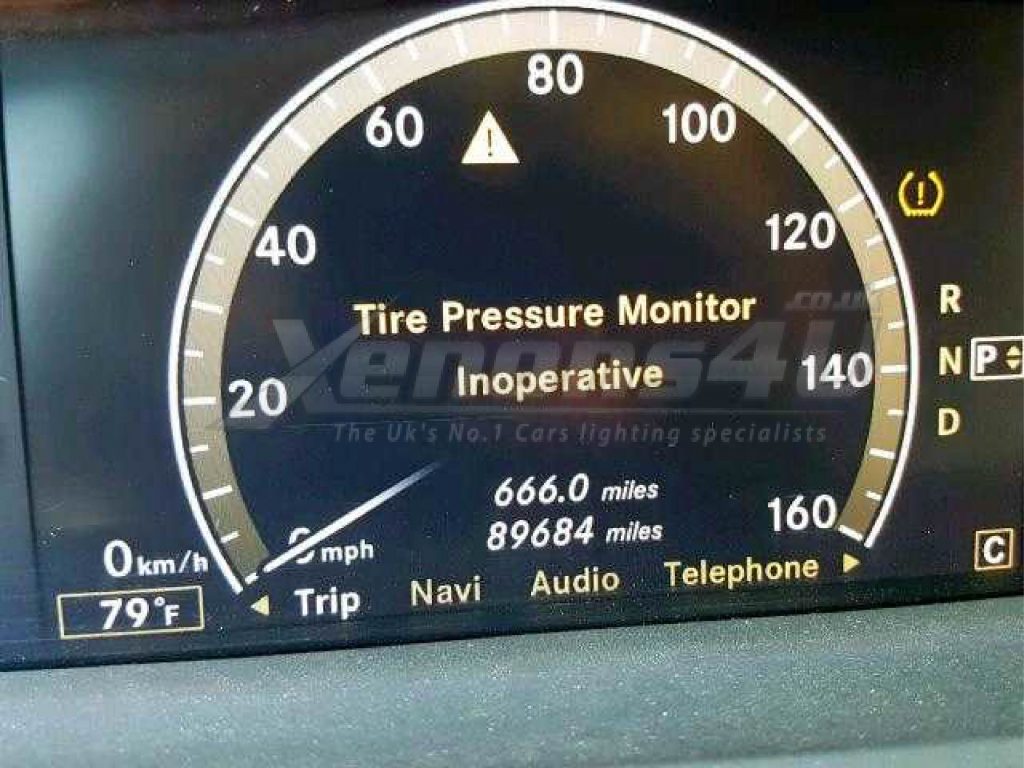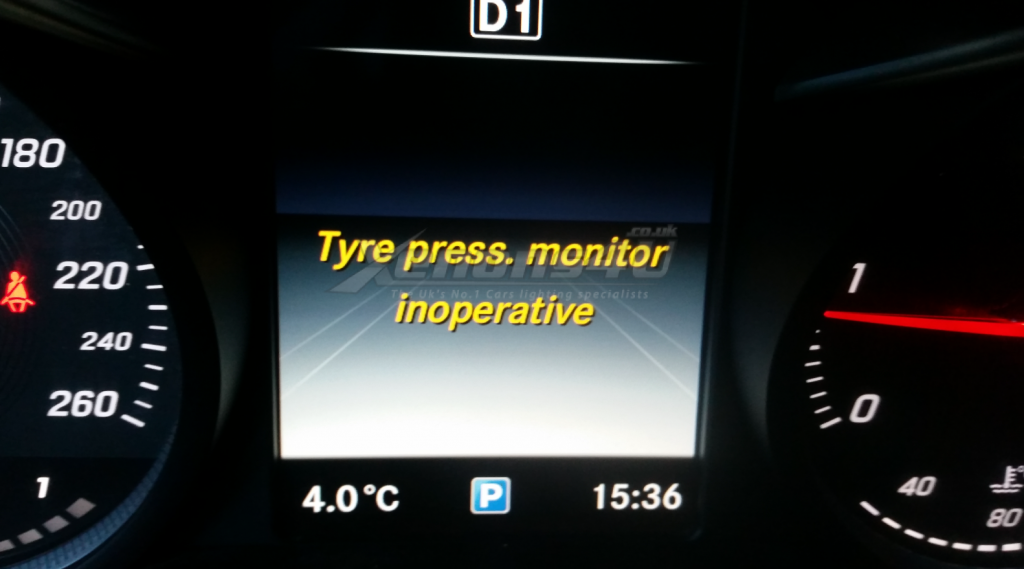The TPMS system explained:
A tyre pressure monitoring system is one of the great evolutions in modern mechanics. It is easy to get both a direct or indirect monitoring system installed, even if it is not supplied at a factory level for your model. A typical tire pressure monitoring system works via an electronic system which monitors the air pressure of each individual tyre and relays this back to the driver via a light or the dashboard display.
What are the benefits of this system for the driver?
Some key benefits of a good tpms system are the increases to safety. Keeping tyre pressure well-adjusted is integral to allowing for correct braking distances and ensuring lateral stability. So a system which measures pressure accurately and then notifies the driver quickly for adjustments is really important. Likewise, there are important economic benefits to keeping tabs on your tyre pressure. Correct tyre pressure means that your tyres will provide better fuel economy and better comfort, as well as ensuring there is less tyre wear. All in all, the Mercedes-Benz TPMS system is a great addition to the mechanics of your car, and it is worth ensuring it is running well. But what do you do when it goes wrong?
Some common malfunctions:
Let’s look at some common malfunctions for the Mercedes-Benz TPMS. First off, check your tyre pressure! It is always worth making sure that all your tyres are at the correct pressure, and then clearing the TPMS message or light. If your TPMS light remains on, or you still have a TPMS inoperative message, then you might need to check whether there is a problem with the TPMS system itself or the main control unit of tyre pressure monitor system has failed, it is small black control unit box, which is responsible for controlling whole system in the car.

There are some common reasons for this: A sudden change in weather can affect the sensor since it is located on the outside of the car. Sensors also have a lifetime, much like any other part in your Mercedes-Benz, and may need replacing from time to time. This will result in the whole system not working and will need checking if you get the TPMS inoperative message pop up, or your light flashes on and off intermittently.
A really common problem with the TPMS sensor is that a careless garage may forget they are there. This means that sometimes when tyres are changed, the garage may not also transfer the sensors to the new rims, or may even damage them in transit. This results in the car not recognising, or not being able to ‘find’ the TPMS sensors. If you are getting this warning flash up after a recent trip to the garage, it is worth taking your car back and asking for the mechanics to check over the work they did.
The easy fix: replacing the 315mhz or 433mhz sensor
The good news is this warning has a really simple fix! First check all the sensors, since you may not need to replace all four TPMS sensors. One way to do this is to check the manual pressure in all four tyres, then replace the TPMS sensor in just one tyre. Reset the sensors (see below), and see if the light goes away! Continue to replace the sensors one by one, until the light goes out or just use special tool to check which tire sensor is faulty.
Resetting the sensors
Resetting the sensor is equally simple: there are no special tools or knowledge needed for this job. All you need to do is drive for 10-15 miles after replacing the old sensors, and your Mercedes-Benz should automatically find and attach the new sensor to the system.
Thinking about tyre pressure: How does it work, how do you reset it, and where can you find the sensor?
There are two kinds of tyre pressure monitoring systems available, direct and indirect. Indirect monitoring systems are slightly less accurate than a direct monitoring system. The indirect system uses the ABS speed sensors to pick up wheels that might be turning at different speeds. Although this will give you a warning when one or two wheels may have lower pressure. But importantly, it cannot detect if all four wheels are simultaneously low.
However, if you are lucky enough to have a Mercedes-Benz like the E-class which is installed with a direct TPMS system, then you have a much more accurate means of monitoring tyre pressure. The warning in this system is flagged up when the tyre pressure drops below a pre-set level in any of the wheels. Each wheel is monitored individually for this via a sensor mounted within each tyre. This relays a warning to your dash, letting you know quickly and accurately when you need to relook at the pressure in your tyres.
How to reset Mercedes-Benz TPMS sytem ?
First things first make sure all sensors are fitted properly, inflate all tires with recommended PSI. If unsure how much, open fuel cap and you will find all the information about tire pressure underneath.
1. Check what is recommened tyre pressure underneath fuel cap as explained above.
2. Use navigation buttons and go to service menu.
3. Find out Tire pressure system.
4. Click button OK to start checking new tire pressure values and start system.
5. After clicking it won't show any information, but don't panic it is normal.
6. If it pops out message "tire pressure to display after a few minutes", that means you'll need to go for 10-15minutes drive for car to recognize new sensors.
7. After short drive go again to the same tire pressure system and click OK button to restart system once more.
8. Press OK to confirm and system should be working properly and tire pressure warning sign will dissapear as well.
Some mercedes-benz TPMS sensors available at our shop:
- A0009054100 Q02
- A0009054100Q02
- A000 905 41 00
- A0009057200 Q01
- A000 905 72 00
- A0025409017
- A0035400217
- 41990-14002
- A000 905 72 05
- A0009057205
- A000 905 00 30
- A0009050030
- A0009050030Q04
- A0009050030Q06
- A0009050030Q09
- A0009050030Q10
Some mercedes-benz cars using TPMS wheel nut and sensor:
- A class W176 W177
- B-Class [W246](from 2013-01 to 2018-12)
- C-Class [C204](from 2011-04 to 2015-10)
- C-Class [W203](from 2007-01 to 2011-03)
- C-Class Coupe [W204](from 2013-01 to 2013-12)
- C class W205 S205 A205 C205
- CLA-Class [C117](from 2013-01 to 2014-11)
- CLC-Class [C203](from 2008-01 to 2012-05)
- CLK-Class [C209](from 2008-01 to 2011-12)
- CLS-Class [C218](from 2010-12 to 2014-11)
- E-Class [W212](from 2009-02 to 2014-11)
- E-Class Coupe [C207](from 2009-01 to 2012-11)
- E-Class Coupe [C207](from 2012-12 to 2017-01)
- E class W212 S212 A207 C207
- E class W213 S213 A238 C238
- GLA-Class [X156](from 2013-12 to 2014-11)
- GL-Class [X164](from 2009-06 to 2012-09)
- GL-Class [X166](from 2012-10 to 2017-12)
- GLK [X204](from 2008-08 to 2012-11)
- GLK [X204](from 2012-12 to 2016-12)
- ML-Class [W166](from 2011-08 to 2012-12)
- R-Class [V251](from 2009-08 to 2012-12)
- R-Class [V251](from 2013-01 to 2018-04)
- S-Class [W221](from 2009-07 to 2013-06)
- S class W222 A217 C217
- SL [R231](from 2012-01 to 2014-05)
- SLK [R172](from 2011-03 to 2012-12)
- SLK [R172](from 2013-01 to 2014-11)
- SLS AMG Roadster [C197](from 2010-02 to 2012-12)
- SLS AMG Roadster [C197](from 2013-01 to 2015-12)
- Sprinter W905 W906
- Sprinter [NCV3](from 2014-06 to 2018-03)
- Sprinter Classic [T1N](from 2013-10 to 2020-02)
- Sprinter Combi [NCV3](from 2012-10 to 2012-12)
- Sprinter Combi [NCV3](from 2013-01 to 2018-02)
- Vito Tourer [VS20](from 2014-10 to 2023-06)
- Vito W447
- Smart Forfour(from 2004-01 to 2014-08)
- Smart Fortwo(from 2007-01 to 2012-12)
- Smart Fortwo(from 2013-01 to 2014-08)



